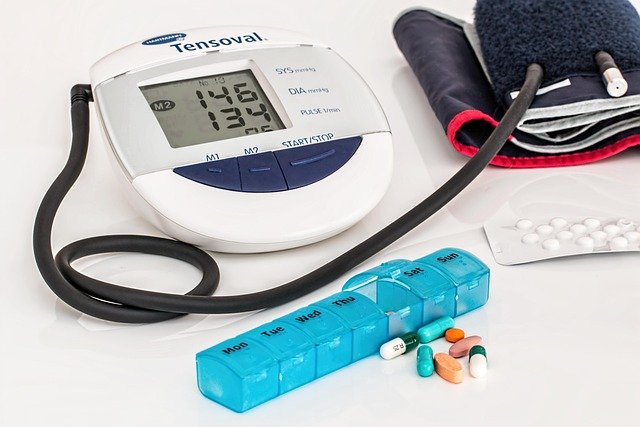Navigating Amyloidosis Care: Modern Treatment Strategies
Discover the latest approaches in managing amyloidosis, a rare protein disorder affecting multiple organs. From cutting-edge therapies to supportive care, this comprehensive guide explores how medical advancements are reshaping treatment outcomes and improving patients' quality of life. Learn about personalized strategies, emerging technologies, and the multidisciplinary care essential for tackling this complex condition.

Amyloidosis, a rare and intricate disorder characterized by abnormal protein deposits in organs and tissues, demands a sophisticated treatment approach. As medical science advances, so do the strategies for combating this challenging condition. This article delves into the current landscape of amyloidosis care, highlighting innovative therapies and comprehensive management techniques.
Treatment Objectives in Amyloidosis Care
When developing a treatment plan for amyloidosis, healthcare professionals focus on several key goals:
- Halting the production of amyloid proteins
- Eliminating existing amyloid deposits
- Supporting organ function and alleviating symptoms
- Enhancing overall quality of life
Achieving these objectives requires a collaborative effort from various medical specialists, including hematologists, cardiologists, nephrologists, and neurologists, among others.
Conventional Treatment Modalities
The approach to treating amyloidosis varies depending on the specific type and the affected organs. Standard treatments include:
-
Chemotherapy: This targets and destroys cells producing abnormal proteins, particularly effective in AL amyloidosis.
-
Stem Cell Transplantation: For suitable candidates with AL amyloidosis, this potentially curative option involves high-dose chemotherapy followed by autologous stem cell transplantation.
-
Organ Transplantation: In cases of severe organ damage, particularly affecting the heart or liver, organ transplantation may be necessary.
-
Supportive Care: This encompasses treatments to manage symptoms and maintain organ function, such as diuretics for fluid retention or cardiac devices for heart rhythm irregularities.
-
Targeted Therapies: These newer medications specifically address the mechanisms involved in amyloid formation or clearance.
Cutting-Edge Therapeutic Approaches
Recent years have seen significant advancements in amyloidosis treatment, with the development of more targeted therapies:
-
RNA Interference (RNAi) Therapies: These innovative drugs work by silencing specific genes involved in the production of amyloid proteins.
-
Monoclonal Antibodies: Designed to target and remove existing amyloid deposits from organs and tissues, these therapies offer a new avenue for treatment.
-
Small Molecule Drugs: These medications aim to stabilize precursor proteins, preventing them from forming amyloid fibrils.
-
Gene Therapy: Although still in experimental stages, this approach seeks to correct the genetic mutations responsible for certain types of amyloidosis.
These emerging treatments provide hope for more effective management of amyloidosis, potentially with reduced side effects compared to traditional chemotherapy.
Comprehensive Symptom Management
Addressing the symptoms of amyloidosis is crucial for improving patients’ quality of life. Supportive treatments may include:
-
Diuretics: To alleviate swelling and edema caused by fluid retention.
-
Pain Management: Various strategies to address pain associated with nerve or organ involvement.
-
Nutritional Support: Dietary modifications and supplements to combat malnutrition and weight loss.
-
Physical Therapy: To maintain mobility and muscle strength, particularly beneficial in cases of peripheral neuropathy.
-
Psychological Support: Counseling and support groups to help patients navigate the emotional challenges of living with a chronic disease.
These supportive measures are tailored to each patient’s unique needs and may evolve as the disease progresses or responds to treatment.
Monitoring Treatment Efficacy
Regularly assessing the effectiveness of amyloidosis treatment is essential for optimizing care. This typically involves:
-
Blood Tests: To measure levels of abnormal proteins and evaluate organ function.
-
Imaging Studies: Such as echocardiograms or MRIs to assess organ involvement and treatment response.
-
Tissue Biopsies: To evaluate the reduction of amyloid deposits in affected organs.
-
Symptom Assessment: Regular evaluation of fatigue, swelling, and other symptoms to gauge quality of life improvements.
-
Functional Tests: To measure enhancements in organ function, such as cardiac stress tests or kidney function assessments.
Close monitoring enables healthcare providers to make timely adjustments to treatment plans, ensuring the best possible outcomes for amyloidosis patients.
The Horizon of Amyloidosis Treatment
As research in the field of amyloidosis continues to progress, the landscape of treatment options is ever-evolving. Ongoing clinical trials and emerging therapies offer hope for even more targeted and effective treatments in the future. This continuous advancement aims to improve outcomes and enhance the quality of life for individuals affected by this complex disorder.
Patients and their families are encouraged to maintain open communication with their healthcare team, staying informed about new developments and participating in decisions about their care. By combining cutting-edge treatments with comprehensive supportive care, the management of amyloidosis continues to improve, offering patients better prospects for managing this challenging condition.
It’s important to note that this article is intended for informational purposes only and should not be considered a substitute for professional medical advice. Always consult with a qualified healthcare provider for personalized guidance and treatment options tailored to your specific situation.






